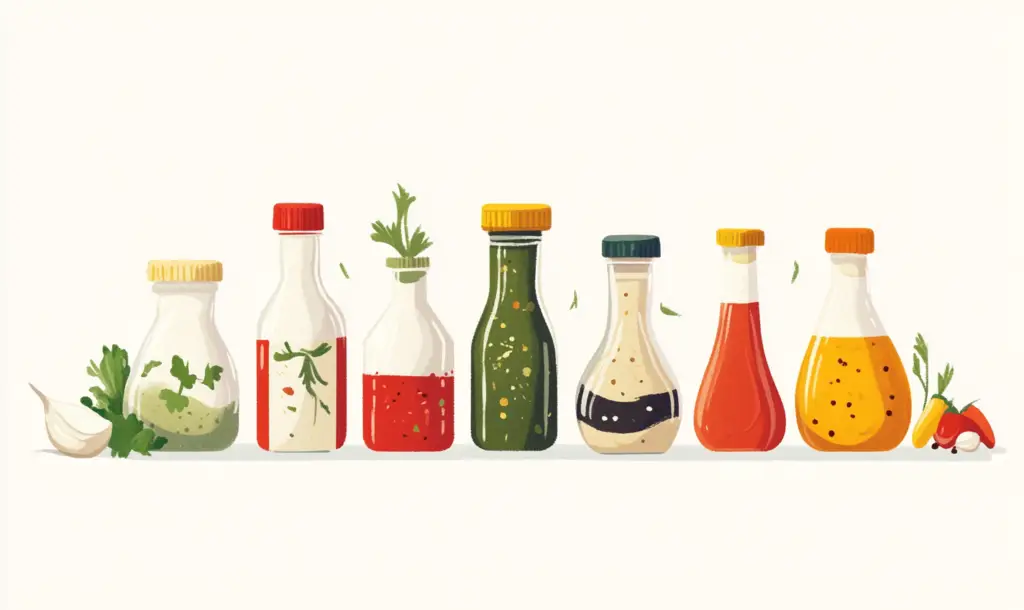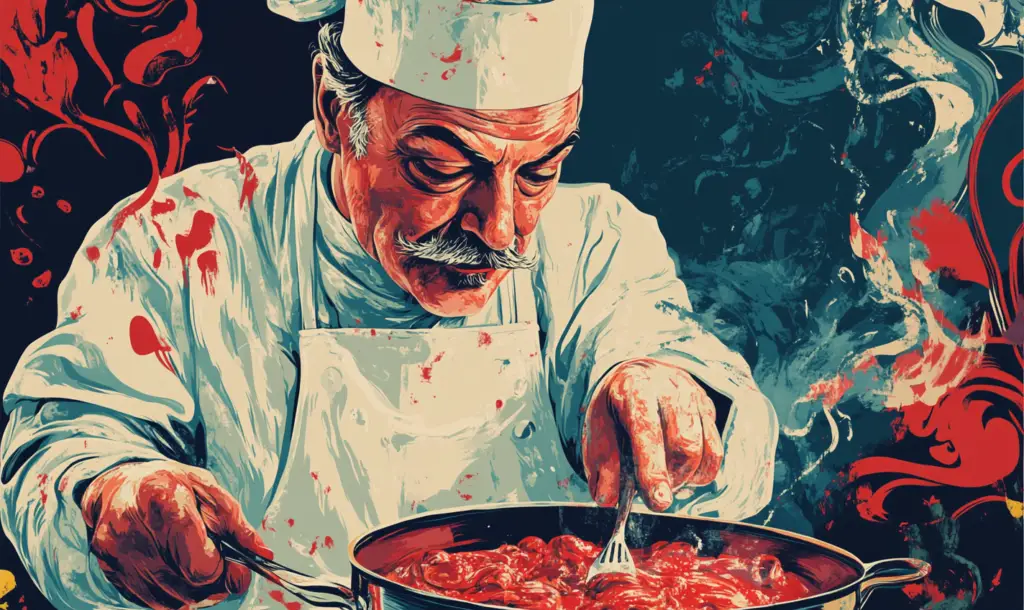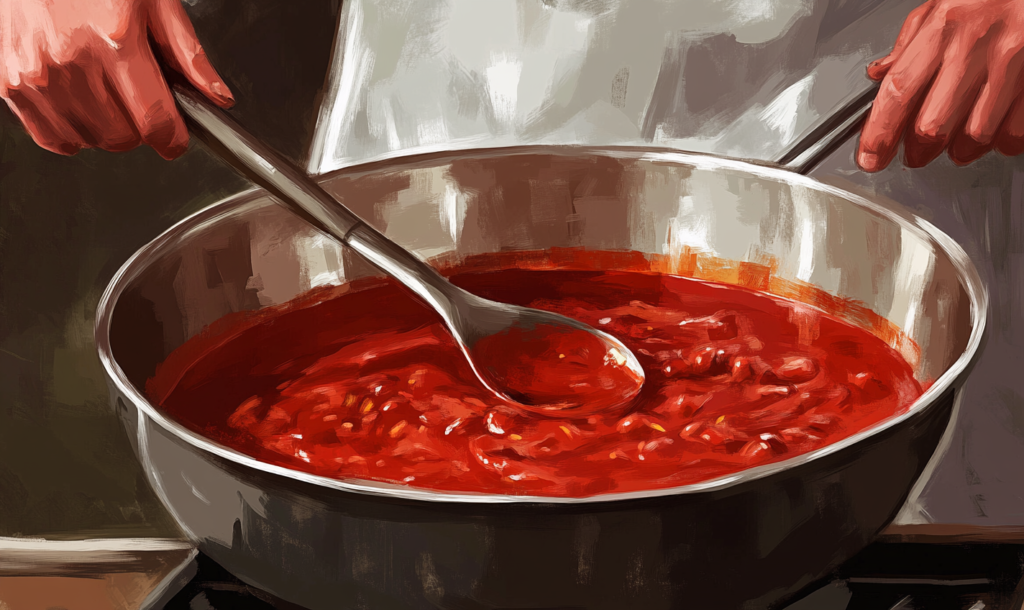
Let’s talk about sauces.
Not just any sauces, but the five French mother sauces — Béchamel, Velouté, Espagnole, Sauce Tomate, and Hollandaise. These are the building blocks of French cuisine, the culinary equivalent of the periodic table. If you can master these, you can cook just about anything. Or at least, that’s what they say. I’ve had my triumphs and my disasters with them, and I’m here to tell you: it’s not always as elegant as Auguste Escoffier made it seem.
The Godfather of Modern French Cooking
Escoffier, the godfather of modern French cooking, didn’t invent these sauces, but he sure as hell organized them into something resembling a science. Before him, there was Marie-Antoine Carême, the culinary prodigy of the early 19th century, who laid the groundwork. Carême was the original sauce architect, classifying them into four families—Allemande, Béchamel, Velouté, and Espagnole—and elevating French cuisine to an art form. His work was monumental, but it was also, well, a bit of a mess. Carême’s sauces were elaborate, often overly complicated, and designed to impress royalty rather than nourish the everyday diner. His cooking was a spectacle, a Baroque opera of flavors and garnishes that left little room for practicality.

Escoffier’s Revolution
Enter Escoffier. In 1903, he published
Le Guide Culinaire, a book that’s still the Bible for chefs today. Where Carême was extravagant, Escoffier was efficient. He streamlined Carême’s classifications, added Sauce Tomate and Hollandaise to the canon, and focused on techniques that highlighted the natural flavors of ingredients rather than burying them under layers of ornamentation. Escoffier’s approach was less about showing off and more about creating something timeless and functional. He took the chaotic, improvisational world of 19th-century French cooking—a world Carême had both glorified and complicated—and gave it rules, structure, and a sense of order.
And for that, we owe him a debt of gratitude—or maybe a stiff drink, depending on how your last attempt at Hollandaise went. Personally, I’ve always admired Carême’s flair, but I’m Team Escoffier all the way. His methods are the ones that actually work in a home kitchen, not just in a palace. Carême might have been the artist, but Escoffier was the engineer, and let’s be honest: when you’re standing over a double boiler at 8 a.m., trying not to curdle your eggs, it’s the engineer you want in your corner.

Béchamel: The Unsung Hero
Let’s start with Béchamel, the so-called “white sauce.” It’s simple: butter, flour, milk, and a pinch of nutmeg. If you can make a roux without burning it, you’re golden. But here’s the thing: no one’s going to throw you a parade for nailing a Béchamel. It’s the culinary equivalent of tying your shoes—necessary, but not exactly showstopping. That said, it’s the backbone of lasagna, mac and
cheese, and a good gratin. Mess it up, though, and you’ll end up with a lumpy, gluey mess that no amount of cheese can salvage.


Velouté: The Quiet Achiever
Then there’s Velouté, the “velvety” one. It’s basically a blond roux mixed with
stock — chicken,
fish, or veal, depending on what you’re cooking. It’s subtle, elegant, and pairs beautifully with
poached chicken or fish. But let’s be honest: Velouté is the sauce you make when you’re trying to impress someone who already thinks you’re fancy. It’s not going to blow anyone’s mind, but it’ll make you feel like you’ve got your life together.

Espagnole: The Forgotten Beast
Now, Espagnole. This one’s a beast. It’s a brown sauce made with a dark roux, beef stock, tomatoes, and a mirepoix. It’s rich, complex, and the foundation for demi-glace and Bordelaise. But here’s the kicker: you’re not going to see Espagnole on many menus these days. It’s the kind of sauce that requires hours of simmering and a level of patience I rarely possess. I’ve made it exactly once, and while it was delicious, I’m not sure I’ll ever do it again. Some things are better left to the professionals.

Sauce Tomate: The Weeknight Savior
Sauce Tomate is where things get a little more approachable. It’s a tomato sauce, but not the kind you dump on
spaghetti. This one starts with
salt pork (yes, really), a mirepoix, and a bouquet garni. It’s simmered until it’s thick and rich, then strained to silky perfection. It’s the sauce that makes ratatouille and stuffed peppers sing. And unlike Espagnole, it’s actually doable on a weeknight.

Hollandaise: The Ultimate Test
But let’s get to the real star of the show: Hollandaise. This is the sauce that separates the amateurs from the pros. It’s just egg yolks, butter, and lemon juice, but it’s also a minefield of potential disasters. I’ve had my share of failures—curdled yolks, broken
emulsions, sauces that looked more like scrambled
eggs than liquid gold. For years, I followed recipes that called for one or two egg yolks, and I could never get it right. Then one day, out of sheer frustration, I decided to start with four yolks. And you know what? It worked. The extra yolks give you a bit more margin for error, and the result is a sauce that’s rich, velvety, and practically foolproof.
Here’s my tip: use a double boiler, go slow with the butter, and don’t panic if it starts to look a little iffy. A splash of cold water can often bring it back from the brink. And if all else fails, start over. Making a good Hollandaise is like gaining entry into a secret club—the kind where people nod at you with respect and maybe even offer you a glass of wine.
So, why bother with these sauces?
Because they’re the foundation of everything. They teach you technique, patience, and the importance of balancing flavors. They’re also a reminder that cooking is as much about the process as it is about the result. Sure, you could buy a jar of Béchamel or Hollandaise, but where’s the fun in that?
Escoffier’s legacy lives on in every whisked yolk, every simmered stock, and every perfectly balanced sauce. These mother sauces are more than just recipes—they’re a connection to a culinary tradition that’s as rich and complex as the sauces themselves. And if you can master them, even imperfectly, you’re part of that tradition too.
Now, if you’ll excuse me, I have a Hollandaise to whisk. Wish me luck.













